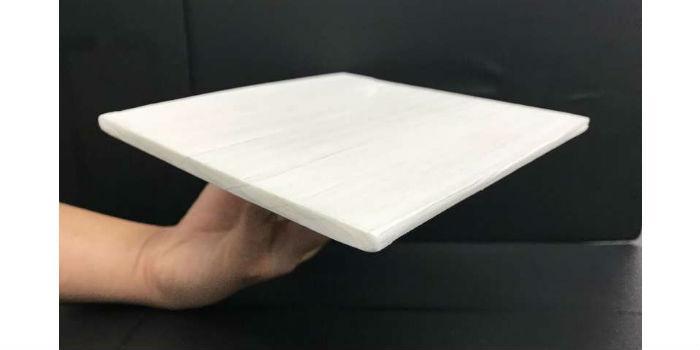 United States. Researchers from the University of Maryland and the University of Colorado at Boulder show in new research that the same tiny internal structures that trees use to transport water and nutrients can be used to create super-strong wooden building materials capable of removing heat from homes or offices.
United States. Researchers from the University of Maryland and the University of Colorado at Boulder show in new research that the same tiny internal structures that trees use to transport water and nutrients can be used to create super-strong wooden building materials capable of removing heat from homes or offices.
The research is the latest from Professor Liangbing Hu and his team to exploit the natural properties of wood and create an incredible range of wood-based technologies. Previously, Hu and his collaborators have processed wood to be stronger than most metals, made it translucent for an energy-saving window material, given its thermal insulation properties, made from low-cost wooden batteries. demonstrated how it could be used for low-cost water purification and desalination, and turned it into a flexible membrane that can convert heat into electricity.
"This [latest work] is another major breakthrough in wood nanotechnologies that the Hu group achieved at the University of Maryland: cooling wood that is made of wood only, that is, no other component, such as polymers, can cool your home as a green building material," said Hu, one of the paper's co-authors.
In their current work, Hu, co-first authors Tian Li and Shuaiming He and four other UMD colleagues joined Researchers at the University of Colorado led by Prof. Xiaobo Yin and including co-lead author Yao Zhai, as well as researchers from the University. california Merced and Huazhong University of Science and Technology of China.
"When applied to construction, this structural material cools without the input of electricity or water," Zhai said.
The researchers tested their cooling wood on a farm in Arizona in warm, sunny, low-wind conditions. There, they tested the coolant wood and found that, on average, they stayed five or six degrees F colder than the ambient air temperature, even in the hottest part of the day. On average, it remained 12 degrees cooler than natural wood, which heats up more in the presence of sunlight.
"Processed wood uses the cold universe as a heat sink and releases thermal energy through the atmospheric transparency window. It is a sustainable material for sustainable energy to combat global warming," Li said.
The mechanical strength by weight of this wood is also stronger than steel, making it an excellent choice for building materials. It is ten times stronger than natural wood and exceeds the strength of steel, reaching 334 MPa · cm3 / g (compared to 110 MPa · cm3 / g for steel). It is also damaged less easily (scratch test) and can support more weight (compression test) than natural wood.
To see how much energy wood saves, they calculated the amount of heat used by apartment buildings typical of U.S. cities across all climate zones. Hot cities like Phoenix and Honolulu save the most energy, especially if older buildings had their siding and roofs replaced with refrigerated wood. Buildings in the U.S. that were built after 2004, or now, would save on average 20% of cooling costs.
"Professor Hu and his collaborators show another use of wood that is not only structurally strong but also useful as an active component for energy management. It is interesting that the same material that releases heat during combustion can be used to cool, offering new opportunities in green construction," said Orlando Rojas, a professor in the department of Bioproducts and Biosystems at Aalto University, Finland. Rojas was not involved in the investigation.
The research was funded by the University of Maryland.
Data Source Provider: University of Maryland.














